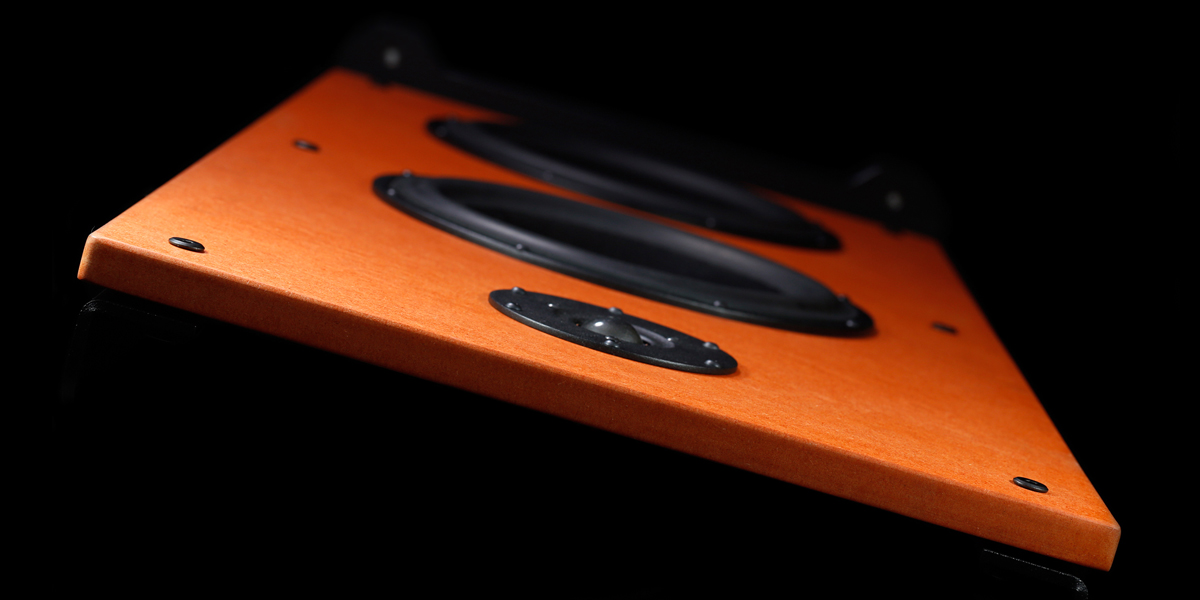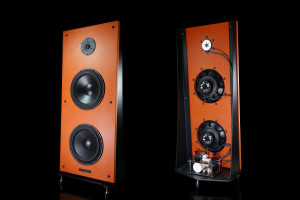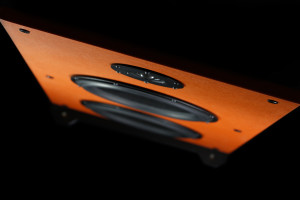In audio, it’s either DIY or ready-made goods, these two worlds almost never collide. Either one builds himself a pair of speakers or has to pay for them. But what if we can have both? With Israeli PureAudioProject manufacture and its Trio10 Timeless model, that’s the case exactly. Said speakers are this review’s main dish. Enjoy!
Introduction
PureAudioProject is a very unique audio company. It was started by Ze’ev Schlik in 2014, past successful High End Munich event one year earlier. It’s fair to say that this Israeli manufacture is a newcomer. But here’s the real thing, the way it conducts its business is like no other known to this scribe. Picture affordable prices, direct sales, very likeable speakers’ topology and presto, full attention is given. Yet this description merely scratches the surface, there’s so much more. Who is Ze’ev Schlik? He’s the PureAudioProject founder and the main shareholder. This is a small, several people strong manufacture. Not one but many aficionados would agree that a bureaucracy free operation of such sort is the best one and rightfully so. Business part aside, Mr Schlik is also an engineer with a proper degree, who worked for years in high tech industry. If that’s still not enough, Ze’ev was the main manager in the largest Israeli musical label, directly connected to Sony. And in 1998 he established a start-up company, which was one of the very first digital music providers to customers directly, via native Comverse Technology Inc., now owned by Malevir. Any questions regarding our gent’s attention or attachment to music seem redundant now, don’t they? But the most important information is that Ze’ev obviously is an enthusiast of high calibre, driven by the same kicks as yours truly. That’s the takeaway past several conversations I had with this man.
Who is Ze’ev Schlik? He’s the PureAudioProject founder and the main shareholder. This is a small, several people strong manufacture. Not one but many aficionados would agree that a bureaucracy free operation of such sort is the best one and rightfully so. Business part aside, Mr Schlik is also an engineer with a proper degree, who worked for years in high tech industry. If that’s still not enough, Ze’ev was the main manager in the largest Israeli musical label, directly connected to Sony. And in 1998 he established a start-up company, which was one of the very first digital music providers to customers directly, via native Comverse Technology Inc., now owned by Malevir. Any questions regarding our gent’s attention or attachment to music seem redundant now, don’t they? But the most important information is that Ze’ev obviously is an enthusiast of high calibre, driven by the same kicks as yours truly. That’s the takeaway past several conversations I had with this man.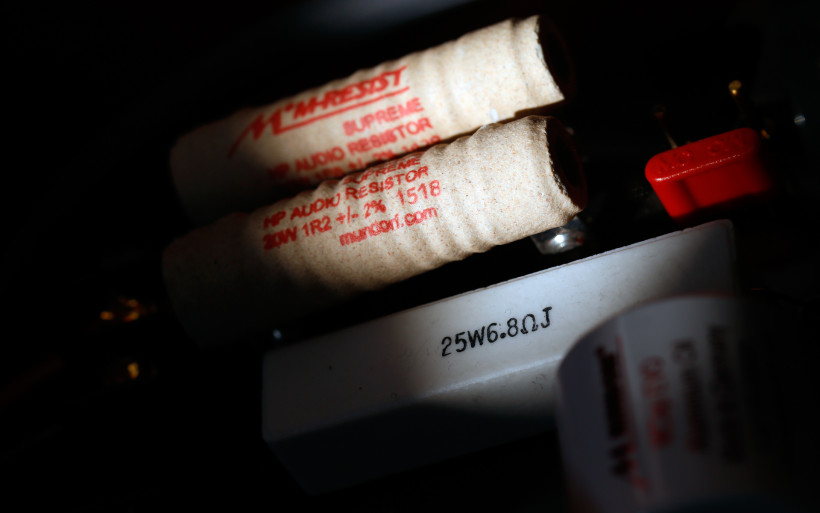 PureAudioProject manufacture is special because of several reasons. The most prominent one is that this company’s offering consist of open baffle designs exclusively. No bass-reflex venting, no transmission line, closed boxes a’la Magico or anything popular. OB topology is of a rare breed, we’re in knee-deep niche. Usually a company has one or two products of this sort, but backed up by the usual, regular stuff. And what about firms fairly successful, yet fully commercial and solely into OB designs? This reviewer knows only several in total. Moving on, PureAudioProject offering is quite affordable. Vast majority of products sit in $3’000 – $8’000 realm, which I consider as perfectly reasonable for what one gets in return. But the most shocking part is yet to come.
PureAudioProject manufacture is special because of several reasons. The most prominent one is that this company’s offering consist of open baffle designs exclusively. No bass-reflex venting, no transmission line, closed boxes a’la Magico or anything popular. OB topology is of a rare breed, we’re in knee-deep niche. Usually a company has one or two products of this sort, but backed up by the usual, regular stuff. And what about firms fairly successful, yet fully commercial and solely into OB designs? This reviewer knows only several in total. Moving on, PureAudioProject offering is quite affordable. Vast majority of products sit in $3’000 – $8’000 realm, which I consider as perfectly reasonable for what one gets in return. But the most shocking part is yet to come.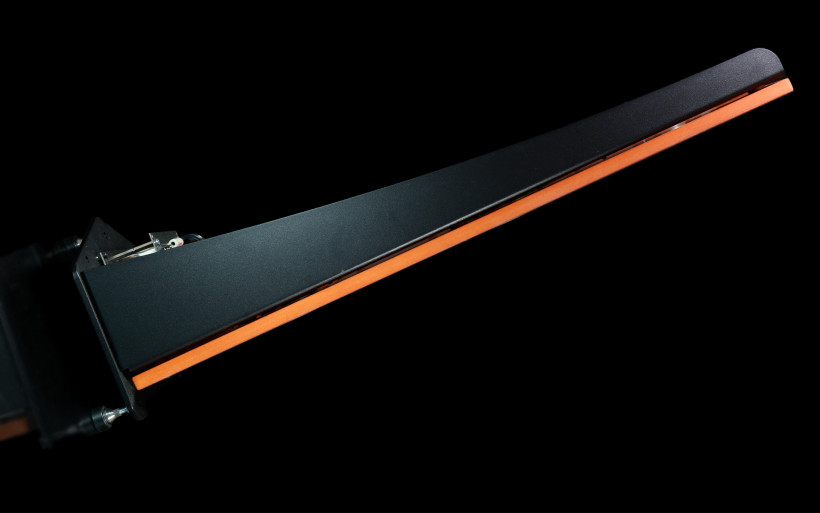 Before we’ll go any further, it’s worth to take a closer look at the rest of said Israeli flock. Stellar12 is the priciest product. This 168 cm tall giant of 86 kilograms weight per piece cost $24’999. Next in line there’s the Trio15 family. The number indicates 15″ drivers on-board and a very similar story is with 10″ loaded Trio10. The overall concept is simple: both series get their unique frames and big transducers, yet what’s in-between depends on a customer and impacts the price, which is understandable. To paint somewhat broader picture, Trio15 can be had with Heil AMT, Tang Band, Beyma or Voxativ drivers, whereas Trio10 is available with the last two and Mundorf’s AMT. Hence one gets OB speakers, which can be adjusted quite extensively to his needs and that’s always good. And in addition, PureAudioProjest has lots of parts in its offer too. If only a frame for your own project is needed, it can be bought with no questions asked and the same story goes with many drivers and crossovers. In short, our Israeli manufacture is very DIY friendly. Trio10 Timeless is different though, it can’t be adjusted.
Before we’ll go any further, it’s worth to take a closer look at the rest of said Israeli flock. Stellar12 is the priciest product. This 168 cm tall giant of 86 kilograms weight per piece cost $24’999. Next in line there’s the Trio15 family. The number indicates 15″ drivers on-board and a very similar story is with 10″ loaded Trio10. The overall concept is simple: both series get their unique frames and big transducers, yet what’s in-between depends on a customer and impacts the price, which is understandable. To paint somewhat broader picture, Trio15 can be had with Heil AMT, Tang Band, Beyma or Voxativ drivers, whereas Trio10 is available with the last two and Mundorf’s AMT. Hence one gets OB speakers, which can be adjusted quite extensively to his needs and that’s always good. And in addition, PureAudioProjest has lots of parts in its offer too. If only a frame for your own project is needed, it can be bought with no questions asked and the same story goes with many drivers and crossovers. In short, our Israeli manufacture is very DIY friendly. Trio10 Timeless is different though, it can’t be adjusted.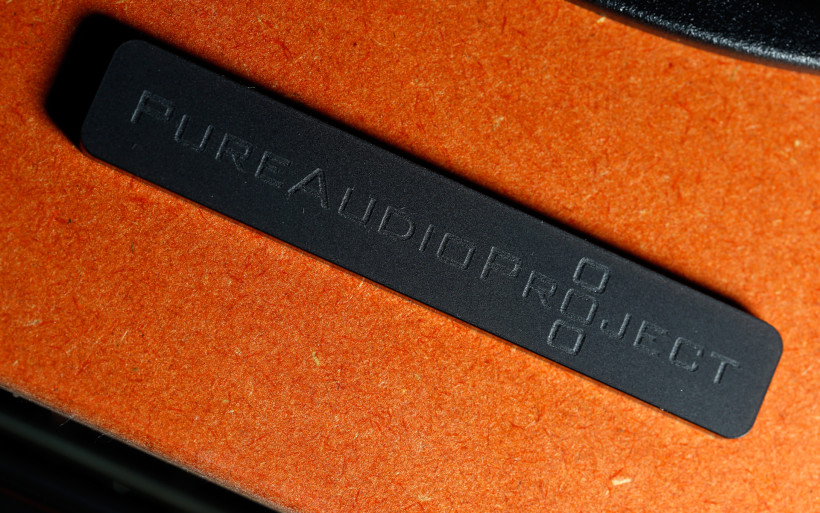 The most unique thing about PureAudioProject’s models is the DIY part. An assembled product shouldn’t be expected, oh no. We’re as far from it as it gets. Brace yourself, several packages are coming your way. Yes, boxes full of parts, namely separately sent drivers, crossovers, baffles and frames, most of ’em from their manufacturers directly. Ain’t that weird? And exciting? Ze’ev likes to play with the major players. Presumably because of his ordering commitments, manufacturers of Mundorf (Germany), Morel (Israel) and Eminence (USA) sort are willing to play with him as well. Needless to say, components made by these operations are to be expected in PureAudioProject products. At this point one fair question begs to be answered. Why to punish customers with said DIY chore? Well, first of all let me reply with yet another one: who says its punishing?
The most unique thing about PureAudioProject’s models is the DIY part. An assembled product shouldn’t be expected, oh no. We’re as far from it as it gets. Brace yourself, several packages are coming your way. Yes, boxes full of parts, namely separately sent drivers, crossovers, baffles and frames, most of ’em from their manufacturers directly. Ain’t that weird? And exciting? Ze’ev likes to play with the major players. Presumably because of his ordering commitments, manufacturers of Mundorf (Germany), Morel (Israel) and Eminence (USA) sort are willing to play with him as well. Needless to say, components made by these operations are to be expected in PureAudioProject products. At this point one fair question begs to be answered. Why to punish customers with said DIY chore? Well, first of all let me reply with yet another one: who says its punishing?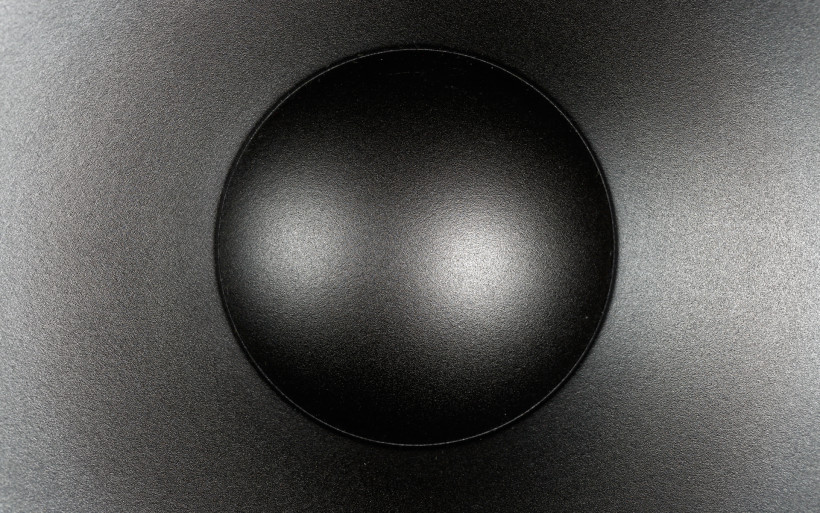 There’s only one valid answer. To assemble your own speakers is fun as hell. Plain fun and nothing else. It’s exceptionally rewarding to see how several cardboard boxes’ innards turn into something that actually sounds more than decently. And all of that goodness thanks to one’s own hands. Two or three hours of your precious time are gone, that’s true. Yet once everything’s done and dandy, the feeling is unbeatable. And that will surely be the case, mainly because of inherently uncomplicated OB topology. The assembly process is perfectly doable by everyone capable of handling a screwdriver. Yes, it’s that easy. This scribe quite routinely asked Ze’ev about some tutorial at first and the man himself replied more or less this: “Look, I can send it to you, but do yourself a favour and try for yourself, see how easy it is!”. And you know what? He was right.
There’s only one valid answer. To assemble your own speakers is fun as hell. Plain fun and nothing else. It’s exceptionally rewarding to see how several cardboard boxes’ innards turn into something that actually sounds more than decently. And all of that goodness thanks to one’s own hands. Two or three hours of your precious time are gone, that’s true. Yet once everything’s done and dandy, the feeling is unbeatable. And that will surely be the case, mainly because of inherently uncomplicated OB topology. The assembly process is perfectly doable by everyone capable of handling a screwdriver. Yes, it’s that easy. This scribe quite routinely asked Ze’ev about some tutorial at first and the man himself replied more or less this: “Look, I can send it to you, but do yourself a favour and try for yourself, see how easy it is!”. And you know what? He was right.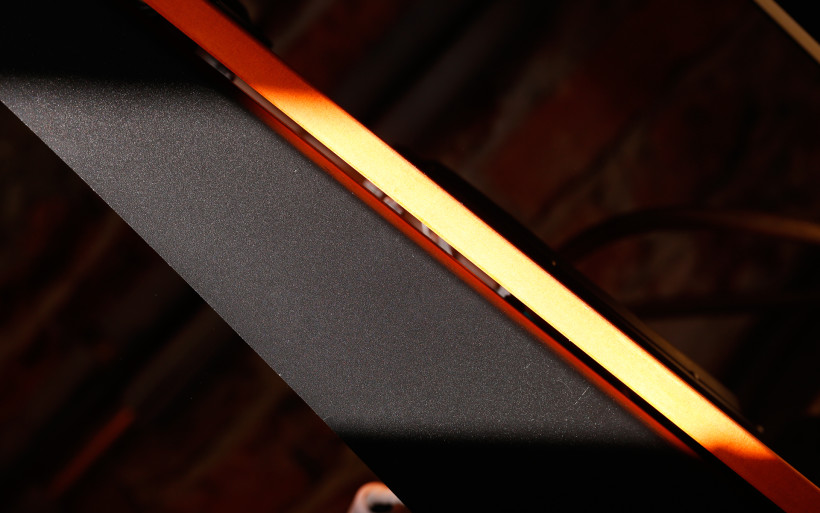 Before we’ll proceed with this story any further, let me shed some light on the PureAudioProject case in general. This review happened because of my 2016 visit at High End Munich event. A pair of said manufacturer’s Trio15 Voxativ model with field-coils by Wolf Von Langa and Thomas Mayer’s amplifiers delivered one of the best performances out there to my subjective pair of ears. Once aforementioned speakers’ asking was revealed, it was high time to properly introduce myself. One thing let to another and the outcome is in front of you.
Before we’ll proceed with this story any further, let me shed some light on the PureAudioProject case in general. This review happened because of my 2016 visit at High End Munich event. A pair of said manufacturer’s Trio15 Voxativ model with field-coils by Wolf Von Langa and Thomas Mayer’s amplifiers delivered one of the best performances out there to my subjective pair of ears. Once aforementioned speakers’ asking was revealed, it was high time to properly introduce myself. One thing let to another and the outcome is in front of you.
Build
Let’s get back to the assembly process itself. First of all, it requires no soldering at all, unless one badly wishes to change crossovers’ resistors or capacitors. Several separate boxes were delivered to this journalist. The biggest and the most flat one sported two baffles. These are essentially very simple MDF based boards with ready-made openings, that’s where all the drivers go. And speaking of which, six in total were sent, that’s a box number two content. Next one, also flat, had steel frames inside and the last one hid a pair of rather big crossovers and a full set of wires to make the necessary connections. Several bags full of differently sized screws and six feet (three for each speaker) in total sealed the deal.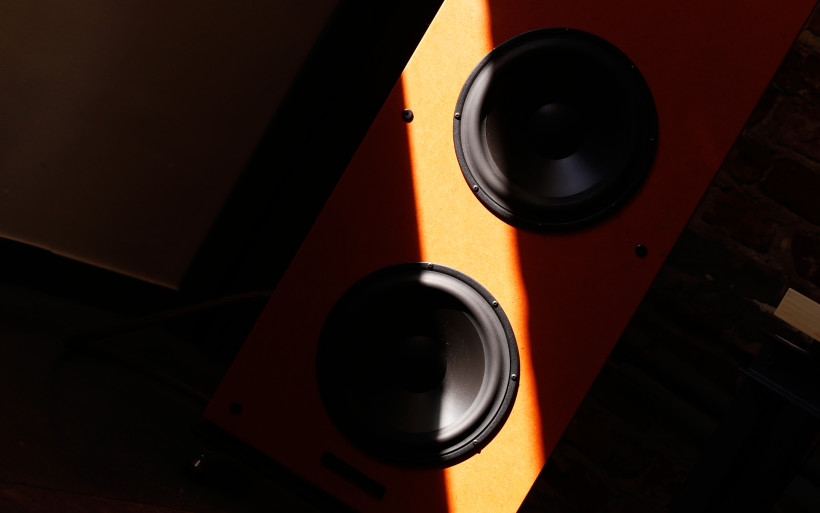 The assembly process itself is a breeze, one can’t really go wrong anywhere. Drivers go into baffles, which connect to steel frames and these are screwed to bases made from the very same material. Each base is loaded with a separate crossover. Done. Every part fits perfectly to its neighbor, each screw goes in smoothly. At least that was the case with this review’s Trio10 Timeless. Transducers can’t be mixed up, though one can make a mistake or two in connecting these to their crossovers. All it takes to avoid this sad scenario is a quick look under the upper x-over’s PCB. That’s the place where one finds ‘+’ / ‘-‘ and HF/MF/LF information. The former is quite obvious, whereas the latter stands for tweeter’s, mid-woofer’s and bass driver’s connection points respectively. And since an OB product is the case, no damping is needed and everything is perfectly reachable. Heck, even key screws are fitted with knurled plastic caps and can be used without any tools at all. Just two fingers and a mild amount of force is all it takes. Honestly I can’t imagine any additional measures that’d make Trio10 Timeless assembly any easier. To summarize my DIY experience with said model, I can only say that it was a great pleasure and the outcome outgrew initial expectations.
The assembly process itself is a breeze, one can’t really go wrong anywhere. Drivers go into baffles, which connect to steel frames and these are screwed to bases made from the very same material. Each base is loaded with a separate crossover. Done. Every part fits perfectly to its neighbor, each screw goes in smoothly. At least that was the case with this review’s Trio10 Timeless. Transducers can’t be mixed up, though one can make a mistake or two in connecting these to their crossovers. All it takes to avoid this sad scenario is a quick look under the upper x-over’s PCB. That’s the place where one finds ‘+’ / ‘-‘ and HF/MF/LF information. The former is quite obvious, whereas the latter stands for tweeter’s, mid-woofer’s and bass driver’s connection points respectively. And since an OB product is the case, no damping is needed and everything is perfectly reachable. Heck, even key screws are fitted with knurled plastic caps and can be used without any tools at all. Just two fingers and a mild amount of force is all it takes. Honestly I can’t imagine any additional measures that’d make Trio10 Timeless assembly any easier. To summarize my DIY experience with said model, I can only say that it was a great pleasure and the outcome outgrew initial expectations.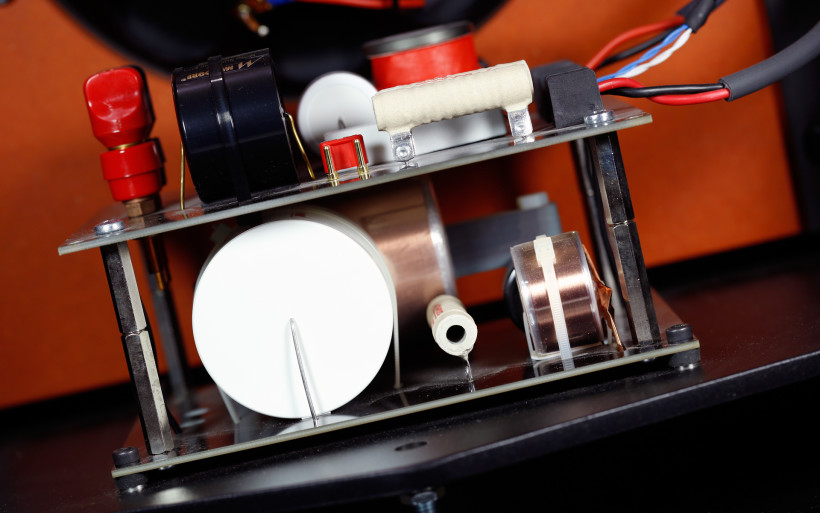 A classical OB design is essentially a set of drivers attached to a plank and a passive crossover and… that’s it. There’s no resonance chamber or, to make it even simpler, no box and no venting at all. This fact alone indicates that peculiar successions are in order and rightfully so. Rest assured that open baffles’ sound is irreplaceable, we’ll get to that in a second. In any case, in order to get a proper downstairs response out of an OB product, big bass transducers have to be used. One simply can’t get away with smaller ones in such a design and there’s no way around it. This means that a product itself is usually big and to some extent Trio10 Timeless is no exception here. It measures (W x H x D) 42 x 108 x 27 cm and weighs around 10 kilograms per piece. Hence it will be quite visible in a room. It literally dwarfs my reference Boenicke W8 in en face comparison. Though it’s not deep at all as it doesn’t have to be, here the visible difference between the two diminishes heavily. The rest of Trio10 Timeless specs is as follows; 89 dB of sensitivity, impedance of 8Ω and $2’999 (VAT/tax/shipping cost excluded) on the price tag.
A classical OB design is essentially a set of drivers attached to a plank and a passive crossover and… that’s it. There’s no resonance chamber or, to make it even simpler, no box and no venting at all. This fact alone indicates that peculiar successions are in order and rightfully so. Rest assured that open baffles’ sound is irreplaceable, we’ll get to that in a second. In any case, in order to get a proper downstairs response out of an OB product, big bass transducers have to be used. One simply can’t get away with smaller ones in such a design and there’s no way around it. This means that a product itself is usually big and to some extent Trio10 Timeless is no exception here. It measures (W x H x D) 42 x 108 x 27 cm and weighs around 10 kilograms per piece. Hence it will be quite visible in a room. It literally dwarfs my reference Boenicke W8 in en face comparison. Though it’s not deep at all as it doesn’t have to be, here the visible difference between the two diminishes heavily. The rest of Trio10 Timeless specs is as follows; 89 dB of sensitivity, impedance of 8Ω and $2’999 (VAT/tax/shipping cost excluded) on the price tag. Three drivers loaded Trio10 Timeless is a 2,5-way design. Two 10″ Morel PAP-1075 transducers are made in Israel for PureAudioProject exclusively. And by that description one should understand that said drivers originally weren’t developed for OB designs, far from it. But since Ze’ev had this kind of needs, Morel delivered. Actually, only the basis (basket etc.) of the other driver known as MW-1075 was used, the rest is a custom job. Each PAP-1075 sports a damped polymer composite cone, polymer treated foam surround, vented double magnet, 3″ Hexatech voice coil, is sold to DIY-ers for $189 and handles slightly different task. The lower MW-1075 acts as a typical woofer that goes up to 250 Hz, whereas the upper mid-woofer stops singing at 6,5 kHz. Both are subject to 1st order filtration.
Three drivers loaded Trio10 Timeless is a 2,5-way design. Two 10″ Morel PAP-1075 transducers are made in Israel for PureAudioProject exclusively. And by that description one should understand that said drivers originally weren’t developed for OB designs, far from it. But since Ze’ev had this kind of needs, Morel delivered. Actually, only the basis (basket etc.) of the other driver known as MW-1075 was used, the rest is a custom job. Each PAP-1075 sports a damped polymer composite cone, polymer treated foam surround, vented double magnet, 3″ Hexatech voice coil, is sold to DIY-ers for $189 and handles slightly different task. The lower MW-1075 acts as a typical woofer that goes up to 250 Hz, whereas the upper mid-woofer stops singing at 6,5 kHz. Both are subject to 1st order filtration.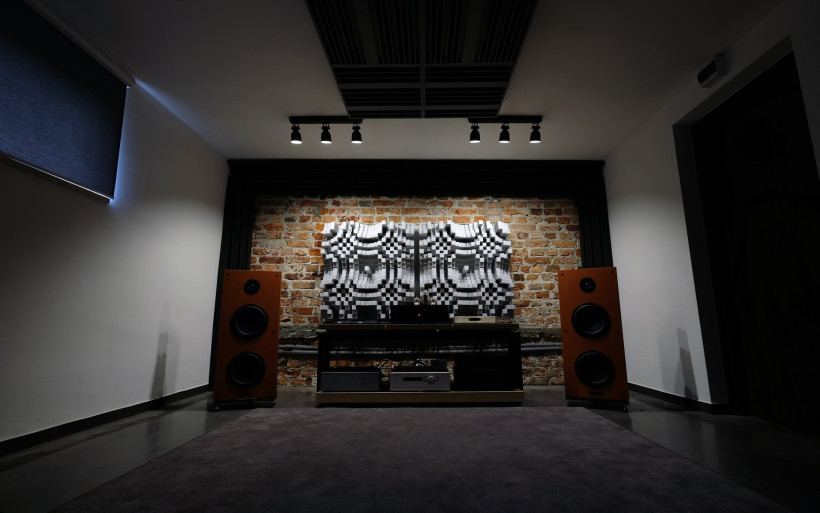 Everything above 6,5 kHz and not earlier is handled by an unknown soft dome tweeter, presumably from Morel offering as well. Yes, this transducer doesn’t overlap with the second 10″ driver (which is on purpose) and is filtered by a 2nd order affair. The amount of highs can be manually adjusted. Each crossover’s green resistors neighbor a jumper and – needless to say – a user picks the most suitable option for his taste. The procedure itself is solder-free, hence quick and very easy. Passive crossovers are really big, each has all elements placed on two PCB’s and is Mundorf heavy. This surely is a sight to be seen for many enthusiasts. Each resistor, capacitor and coil is made by said German manufacturer and rather rarely seen even in much pricier products. Dandy, eh?
Everything above 6,5 kHz and not earlier is handled by an unknown soft dome tweeter, presumably from Morel offering as well. Yes, this transducer doesn’t overlap with the second 10″ driver (which is on purpose) and is filtered by a 2nd order affair. The amount of highs can be manually adjusted. Each crossover’s green resistors neighbor a jumper and – needless to say – a user picks the most suitable option for his taste. The procedure itself is solder-free, hence quick and very easy. Passive crossovers are really big, each has all elements placed on two PCB’s and is Mundorf heavy. This surely is a sight to be seen for many enthusiasts. Each resistor, capacitor and coil is made by said German manufacturer and rather rarely seen even in much pricier products. Dandy, eh?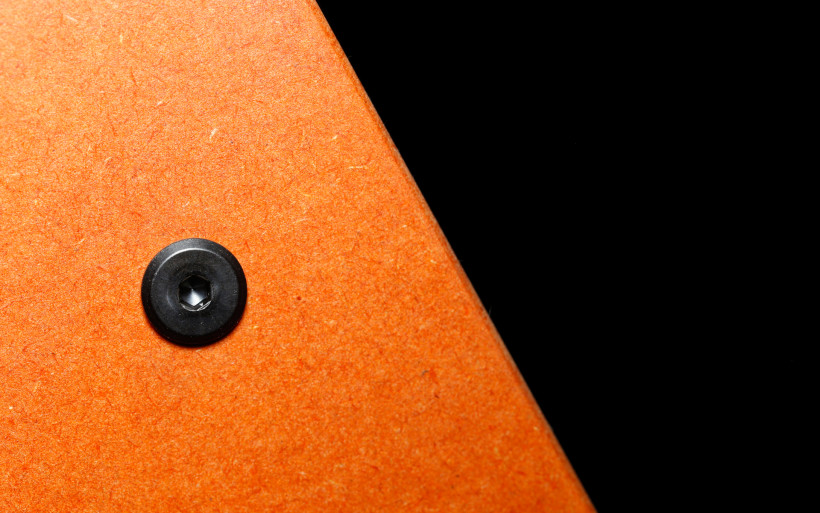 It’s worth to know that Trio10 Timeless is a bit different in comparison to the rest of PureAudioProject offering. It’s sold as is, namely without any tweaks, changes or other shenanigans available. This is in order not to confuse a customer, therefore to make said speakers as accessible as it gets. With this model in particular, Ze’ev wants to reach out to people who are willing to spend $3’000 on a pair of speakers, yet aren’t victims of audiophilia nervosa… yet. Trio10 Timeless is aimed at someone who wants the good stuff, yet with user friendliness factor high enough to pull a finger on an OB trigger. It’s smaller than any other from Trio15 series, hence naturally more domestic and also available in modern finishes. Lifestyle is the key word here. And it sounds in a particular way, which makes this story perfectly viable, we’ll get to that below. In any case, the smallest Israeli OB affair looks very nice subjectively. Somewhat raw design it represents worked out quite well within my own four walls, mainly thanks to matte finish, orange paint job and no frills attitude in general. And even though Trio10 Timeless is the most accessible one in PureAudioProject portfolio, OB topology makes it rather serious performer still.
It’s worth to know that Trio10 Timeless is a bit different in comparison to the rest of PureAudioProject offering. It’s sold as is, namely without any tweaks, changes or other shenanigans available. This is in order not to confuse a customer, therefore to make said speakers as accessible as it gets. With this model in particular, Ze’ev wants to reach out to people who are willing to spend $3’000 on a pair of speakers, yet aren’t victims of audiophilia nervosa… yet. Trio10 Timeless is aimed at someone who wants the good stuff, yet with user friendliness factor high enough to pull a finger on an OB trigger. It’s smaller than any other from Trio15 series, hence naturally more domestic and also available in modern finishes. Lifestyle is the key word here. And it sounds in a particular way, which makes this story perfectly viable, we’ll get to that below. In any case, the smallest Israeli OB affair looks very nice subjectively. Somewhat raw design it represents worked out quite well within my own four walls, mainly thanks to matte finish, orange paint job and no frills attitude in general. And even though Trio10 Timeless is the most accessible one in PureAudioProject portfolio, OB topology makes it rather serious performer still.
Sound
To handle this open baffle oriented task, the usual suspects were used, namely LampizatOr Golden Gate (Psvane WE101D-L + KR Audio 5U4G ltd.), Nic Poulson’s Trilogy 925 integrated amplifier, Sanders Sound Systems Magtech + preamplifier and FirstWatt F7. For the sake of the facts, Foobar2000 loaded Asus UX305LA and Lumin T1 are on this list as well.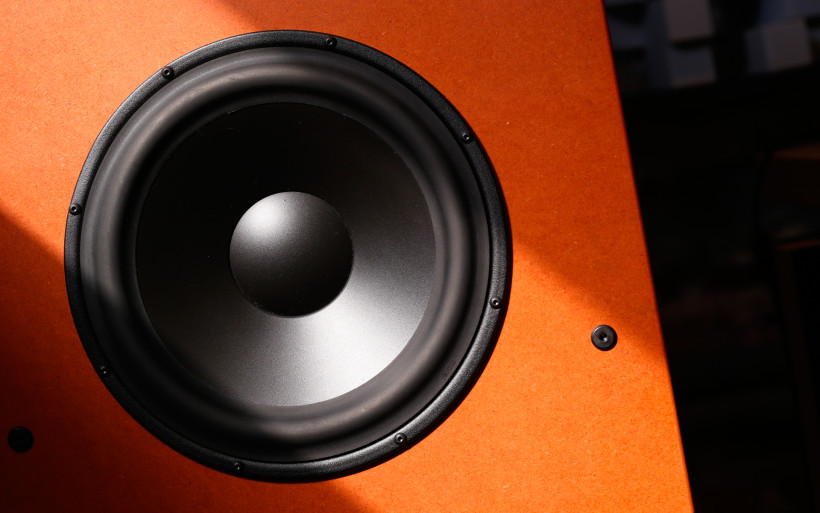 Ze’ev warned me about this. He really did. He spoke about this a number of times clearly and firmly, yes he did. “Huh? What the…?”, one might ask. Burn-in, that’s what. Once Trio10 Timeless was assembled and connected for the very first time, the outcome was on the ‘meh’ side for a number of viable reasons. The sound was slow, veiled, with heavily dimmed highs, trimmed low end and FR a bit above bloated. I was told that delivered drivers should be good to go as these were used by another journalist. Yet my ears weren’t lying, something clearly was off and it was high time to ask Ze’ev about the reason. In return I was informed that Morel woofers change significantly past rather extensive burn-in period. PureAudioProject’s main man specifically said that there’s no point in giving Trio10 Timeless a go before 150 hours mark is reached. And he said it like it was an obvious thing, no ifs or buts. One might think now: “How much a speaker can change?”. Well, severely and this review’s main dish proved said statement with ease.
Ze’ev warned me about this. He really did. He spoke about this a number of times clearly and firmly, yes he did. “Huh? What the…?”, one might ask. Burn-in, that’s what. Once Trio10 Timeless was assembled and connected for the very first time, the outcome was on the ‘meh’ side for a number of viable reasons. The sound was slow, veiled, with heavily dimmed highs, trimmed low end and FR a bit above bloated. I was told that delivered drivers should be good to go as these were used by another journalist. Yet my ears weren’t lying, something clearly was off and it was high time to ask Ze’ev about the reason. In return I was informed that Morel woofers change significantly past rather extensive burn-in period. PureAudioProject’s main man specifically said that there’s no point in giving Trio10 Timeless a go before 150 hours mark is reached. And he said it like it was an obvious thing, no ifs or buts. One might think now: “How much a speaker can change?”. Well, severely and this review’s main dish proved said statement with ease.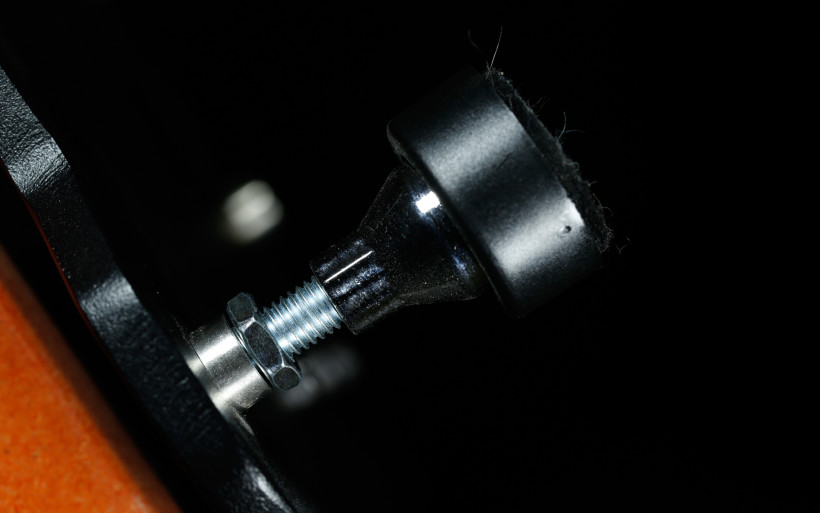 Since Trio10 Timeless is an open baffle design, one should expect uncolored bass, big scale and quite direct approach in general. Big drivers make big sound. In most cases, bass-reflex boxes’ owners can only dream about these highly positive things. Yet everything comes with a price and OB designs aren’t different here. The soundstage can be big in general and in Trio10 Timeless case it is; both wide and tall. What’s usually missing is layering, speakers of this Israeli sort tend to not present exceptionally developed depth in front of a listener. One usually can’t peel one row after another like a proverbial onion with these. And that’s heard very clearly for someone who comes from i.e. Boenicke camp. But then again, there’s no doubt which product has the downstairs department colored and that’s not Trio10 Timeless but its much pricier rival. Obviously, the latter isn’t vented whereas the W8 is. Past this description it’s fair to ask where this review’s hero stands.
Since Trio10 Timeless is an open baffle design, one should expect uncolored bass, big scale and quite direct approach in general. Big drivers make big sound. In most cases, bass-reflex boxes’ owners can only dream about these highly positive things. Yet everything comes with a price and OB designs aren’t different here. The soundstage can be big in general and in Trio10 Timeless case it is; both wide and tall. What’s usually missing is layering, speakers of this Israeli sort tend to not present exceptionally developed depth in front of a listener. One usually can’t peel one row after another like a proverbial onion with these. And that’s heard very clearly for someone who comes from i.e. Boenicke camp. But then again, there’s no doubt which product has the downstairs department colored and that’s not Trio10 Timeless but its much pricier rival. Obviously, the latter isn’t vented whereas the W8 is. Past this description it’s fair to ask where this review’s hero stands.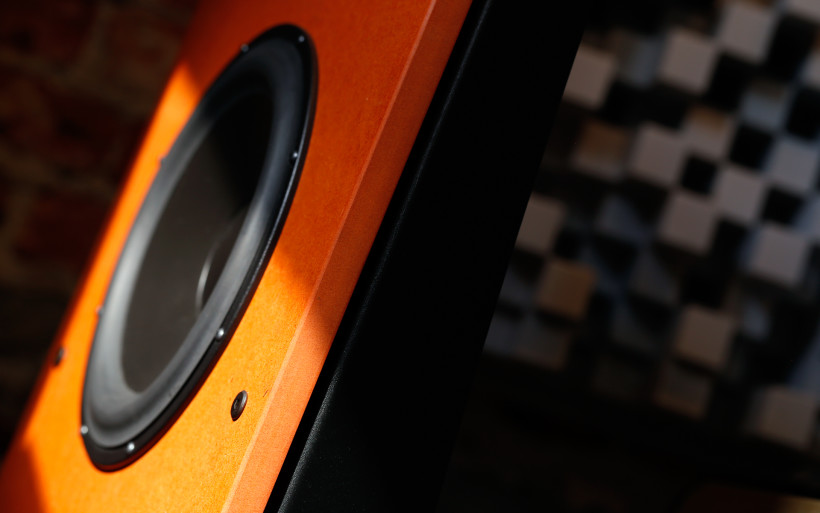 PureAudioProject’s latest product sounds like an open baffle indeed, it delivers sound in direct, quite effortless and big fashion, that’s undeniable. Yet at the same time it’s very clearly heard that this product was tuned by someone who values emotional approach to music, on the contrary to investigation with a magnifying glass on hand. Someone who wanted to extract as much music from cold electronics as possible. Someone who favors saturation and vividness over detailing and precision. This short description should already sketch quite an informative picture of what Trio10 Timeless really is. Yes, a joy provider above all else, yet loaded with usual OB virtues.
PureAudioProject’s latest product sounds like an open baffle indeed, it delivers sound in direct, quite effortless and big fashion, that’s undeniable. Yet at the same time it’s very clearly heard that this product was tuned by someone who values emotional approach to music, on the contrary to investigation with a magnifying glass on hand. Someone who wanted to extract as much music from cold electronics as possible. Someone who favors saturation and vividness over detailing and precision. This short description should already sketch quite an informative picture of what Trio10 Timeless really is. Yes, a joy provider above all else, yet loaded with usual OB virtues.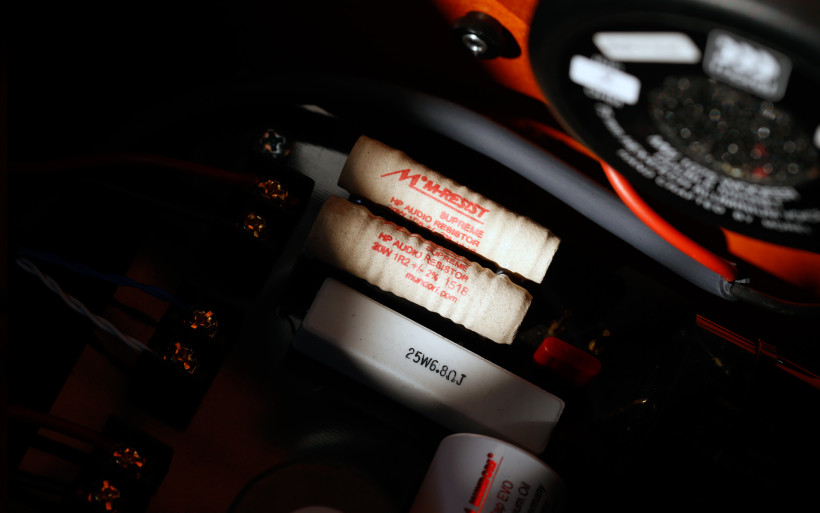 Let’s define what joy is. If density, saturation, vivid colors and gentle attitude are mixed altogether, the outcome is highly entertaining and pleasantly warm. Trio10 Timeless doesn’t act like a strict, picky and precise math teacher, but an easygoing biology enthusiast doing the best he can to spread his hobby among a group of young people. Not a ruler and a pen inside of a sterile classroom are used, but live specimens during many outdoor trips instead. That’s his way of fighting for listeners’ attention and involvement, which he gets in return. That’s the reward for his devotion.
Let’s define what joy is. If density, saturation, vivid colors and gentle attitude are mixed altogether, the outcome is highly entertaining and pleasantly warm. Trio10 Timeless doesn’t act like a strict, picky and precise math teacher, but an easygoing biology enthusiast doing the best he can to spread his hobby among a group of young people. Not a ruler and a pen inside of a sterile classroom are used, but live specimens during many outdoor trips instead. That’s his way of fighting for listeners’ attention and involvement, which he gets in return. That’s the reward for his devotion.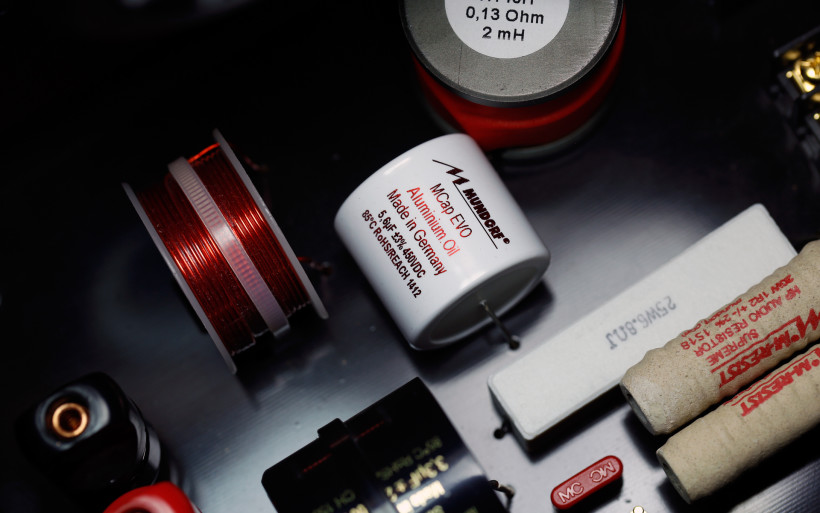 Trio10 Timeless provides a listener with quite generous amount of softness, which is heard quite well in bass department. The very first impression is that it sounds a bit like a typical, warm bass-reflex affair as it’s quite round and, dare I say, pretty. But when needed, generous stiffness appears literally out of nowhere, which makes the picture properly contoured and hardened in right places. It’s fair to say that one get’s the best of both worlds; density and stiffness required in order to not have too diluted experience. And scale, let’s not forget about this aspect. Above mentioned 10′ woofers are able to pump enough air to create impressively big bass. Big enough to make it the main focus point. Yes, Trio10 Timeless has well-developed downstairs department, on the contrary to what many people might think about mere 10′ drivers. Yet once these used in our Timeless hero are properly driven, its bass won’t overpower the rest of audible FR. Good job!
Trio10 Timeless provides a listener with quite generous amount of softness, which is heard quite well in bass department. The very first impression is that it sounds a bit like a typical, warm bass-reflex affair as it’s quite round and, dare I say, pretty. But when needed, generous stiffness appears literally out of nowhere, which makes the picture properly contoured and hardened in right places. It’s fair to say that one get’s the best of both worlds; density and stiffness required in order to not have too diluted experience. And scale, let’s not forget about this aspect. Above mentioned 10′ woofers are able to pump enough air to create impressively big bass. Big enough to make it the main focus point. Yes, Trio10 Timeless has well-developed downstairs department, on the contrary to what many people might think about mere 10′ drivers. Yet once these used in our Timeless hero are properly driven, its bass won’t overpower the rest of audible FR. Good job!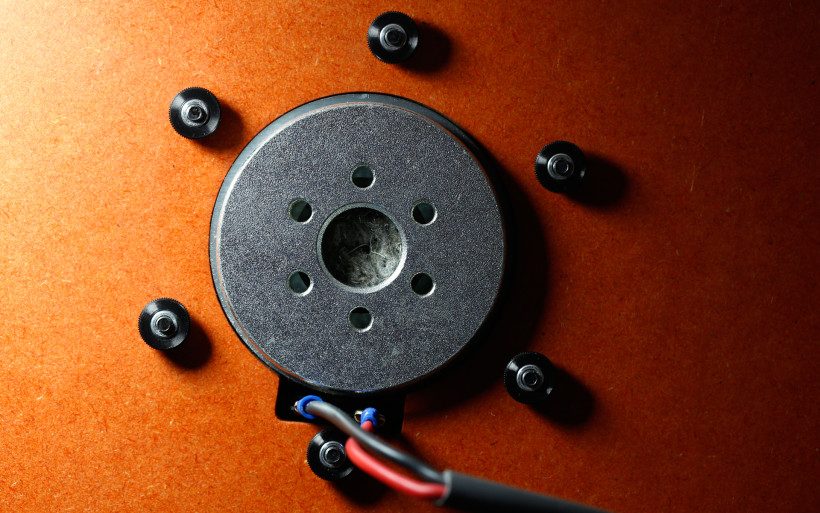 Midrange is also properly audible and presented in the same fashion as bass, namely it’s rounded yet clear enough. And ‘enough’ means that it’s not veiled. Again ‘the best of both worlds’ scenario is the case. High frequencies are different though, slightly dimmed. This translates to Trio10 Timeless agile and properly dense, yet not energetic. One’s listening focus simply lies elsewhere, in richness of instruments’ and not lit-up and clear picture instead. Here things get quite personal. Purely subjectively I’d probably mount a lower value resistor instead of what’s currently available. And having said that, Trio10 Timeless provide quite informative experience. Yet again, on this aspect in particular no additional lighting is put than needed. To hear is to decide and adjust, or if the outcome is a bit off, one resistor swap will do the trick.
Midrange is also properly audible and presented in the same fashion as bass, namely it’s rounded yet clear enough. And ‘enough’ means that it’s not veiled. Again ‘the best of both worlds’ scenario is the case. High frequencies are different though, slightly dimmed. This translates to Trio10 Timeless agile and properly dense, yet not energetic. One’s listening focus simply lies elsewhere, in richness of instruments’ and not lit-up and clear picture instead. Here things get quite personal. Purely subjectively I’d probably mount a lower value resistor instead of what’s currently available. And having said that, Trio10 Timeless provide quite informative experience. Yet again, on this aspect in particular no additional lighting is put than needed. To hear is to decide and adjust, or if the outcome is a bit off, one resistor swap will do the trick.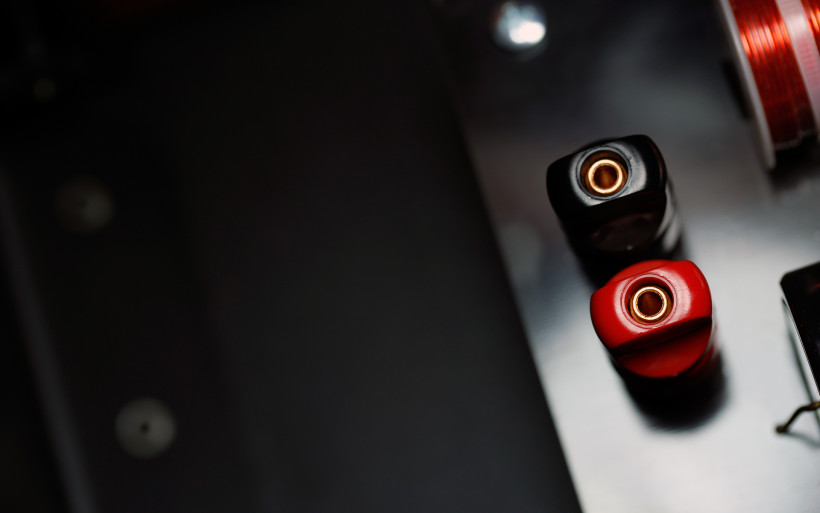 The last stop of this dissection is imaging. Trio10 Timeless handles said task very effortlessly, mainly because it doesn’t hide behind corners with its sound. This essentially means that even though this performer is quite polite and very musical, it belongs to the OB camp. Hence these floorstanders’ sound is direct and materialized in front of a listener, instead of drawing him deep into the unknown. Things happen right here and right now most of the time, unless a specific, dark and withdrawn recording is on. This scribe can’t complain in terms of imaging’s width and height. Instruments are a bit bigger than usual, but subjectively pleasantly served and not overblown. Let’s invoke three times pricier Boenicke W8 here. My reference, though of much smaller frame, paints even taller and wider picture, that goes rather without saying. Yet the real difference is in depth. Trio10 Timeless does the job nicely here, though doesn’t have this aspect as generous as my much costlier W8 speakers. Though the former isn’t able to show as much layers as Sven’s product does, there’s no shame in it. Trio10 Timeless inherited not only lots of OB design’s virtues, but some of its flaws as well. It’s also worth to know that said model isn’t too airy. At this point it should be obvious, since its performance is density oriented and with highs slightly withdrawn. Boenicke W8’s approach is more precise, airier and informative.
The last stop of this dissection is imaging. Trio10 Timeless handles said task very effortlessly, mainly because it doesn’t hide behind corners with its sound. This essentially means that even though this performer is quite polite and very musical, it belongs to the OB camp. Hence these floorstanders’ sound is direct and materialized in front of a listener, instead of drawing him deep into the unknown. Things happen right here and right now most of the time, unless a specific, dark and withdrawn recording is on. This scribe can’t complain in terms of imaging’s width and height. Instruments are a bit bigger than usual, but subjectively pleasantly served and not overblown. Let’s invoke three times pricier Boenicke W8 here. My reference, though of much smaller frame, paints even taller and wider picture, that goes rather without saying. Yet the real difference is in depth. Trio10 Timeless does the job nicely here, though doesn’t have this aspect as generous as my much costlier W8 speakers. Though the former isn’t able to show as much layers as Sven’s product does, there’s no shame in it. Trio10 Timeless inherited not only lots of OB design’s virtues, but some of its flaws as well. It’s also worth to know that said model isn’t too airy. At this point it should be obvious, since its performance is density oriented and with highs slightly withdrawn. Boenicke W8’s approach is more precise, airier and informative.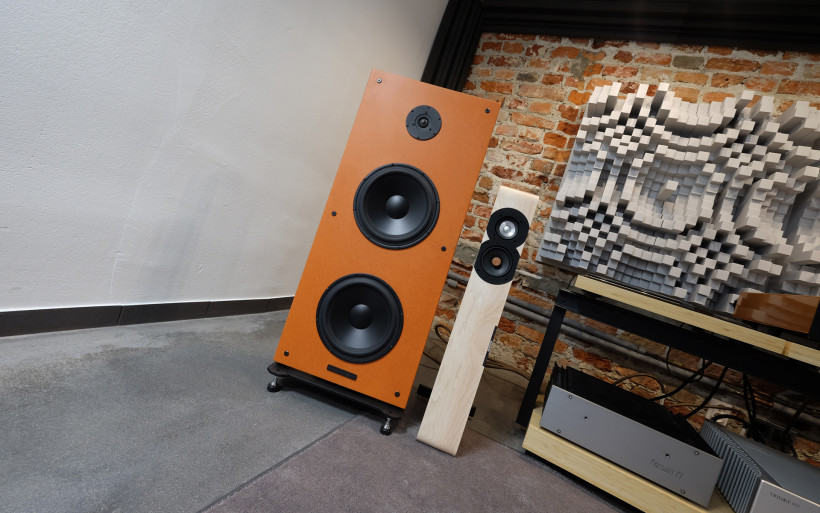 Another distinctive difference between Swiss and Israeli products is in effortlessness of the sound. Trio10 Timeless has this factor elevated as it comes as a part of the OB package, whereas the former model is less direct and present. To make it even simpler to understand, picture two strongmen of different frames. The bigger one calmly puts his hands on a bar in front of him, very easily and with confidence lifts it and then simply walks away. The smaller guy walks towards the same weight quicker and is a bit nervous. While holding a bar up high, sweat quickly appears on his forehead, but the job’s done nonetheless. Both individuals handled the very same task, though in different fashion. Now picture that the former came from Israeli, whereas the latter’s home is in Switzerland.
Another distinctive difference between Swiss and Israeli products is in effortlessness of the sound. Trio10 Timeless has this factor elevated as it comes as a part of the OB package, whereas the former model is less direct and present. To make it even simpler to understand, picture two strongmen of different frames. The bigger one calmly puts his hands on a bar in front of him, very easily and with confidence lifts it and then simply walks away. The smaller guy walks towards the same weight quicker and is a bit nervous. While holding a bar up high, sweat quickly appears on his forehead, but the job’s done nonetheless. Both individuals handled the very same task, though in different fashion. Now picture that the former came from Israeli, whereas the latter’s home is in Switzerland.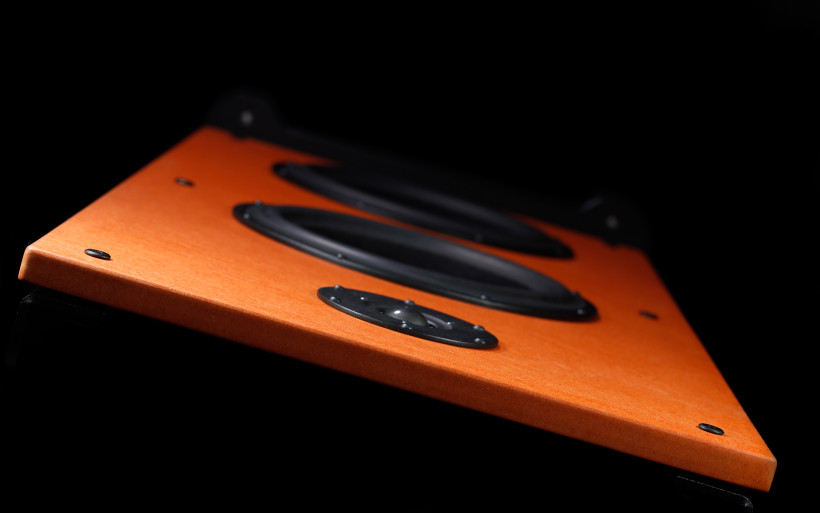 Trio10 Timeless impressed me with its smoothness. In its case, this aspect isn’t delivered by one amplifier out of ten, but presumably by any device of this sort. Said model simply isn’t nervous at all, which is a plus. And because its character is obviously mild and jolly, certain types of decks work better with it than the other. The best outcome within my own four walls was achieved with Sanders Sound Systems Magtech + preamplifier combo. Each of our floorstanders’ strengths was shown, yet with proper crack and shove, just as the doctor ordered. Trilogy 925 brought more gutsy and fuzzier attitude to the table, it also delivered somewhat bigger and deeper soundstage. But the outcome was a bit on the slower side.
Trio10 Timeless impressed me with its smoothness. In its case, this aspect isn’t delivered by one amplifier out of ten, but presumably by any device of this sort. Said model simply isn’t nervous at all, which is a plus. And because its character is obviously mild and jolly, certain types of decks work better with it than the other. The best outcome within my own four walls was achieved with Sanders Sound Systems Magtech + preamplifier combo. Each of our floorstanders’ strengths was shown, yet with proper crack and shove, just as the doctor ordered. Trilogy 925 brought more gutsy and fuzzier attitude to the table, it also delivered somewhat bigger and deeper soundstage. But the outcome was a bit on the slower side.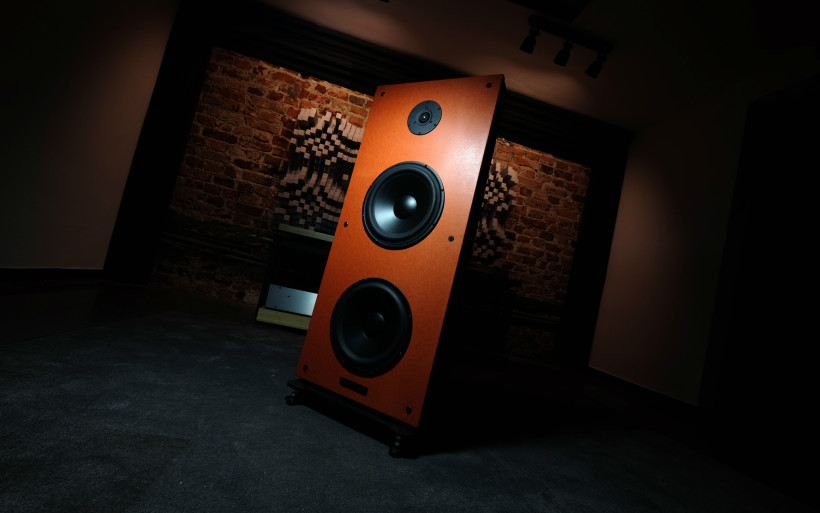 And lastly, FistWatt F7. Here everything ticked yet the bass was gone. What’s left was a subtle and gentle knocking here and there; low extension heavily trimmed and severe liposuction in general. Yet it’s fair to say that Ze’ev warned me about this, low power amps tend to weaken the bass audibly. He also said that Trio10 Timeless enjoy strong amplifiers’ company a lot. And past said exercises that’s hardly any surprise. This model needs a fast, transparent and powerful companion to make its downstairs department properly orderly; not just audible but a bit punchy as well and all that without any drawbacks in return. And since additional sweetness is off the menu, decently made class D representatives or Job 225 power amp seem to be the most suitable fit. Ze’ev revealed that the best result thus far he achieved with one of Wyred4Sound decks. That’s class D of high power right there. It makes sense, doesn’t it?
And lastly, FistWatt F7. Here everything ticked yet the bass was gone. What’s left was a subtle and gentle knocking here and there; low extension heavily trimmed and severe liposuction in general. Yet it’s fair to say that Ze’ev warned me about this, low power amps tend to weaken the bass audibly. He also said that Trio10 Timeless enjoy strong amplifiers’ company a lot. And past said exercises that’s hardly any surprise. This model needs a fast, transparent and powerful companion to make its downstairs department properly orderly; not just audible but a bit punchy as well and all that without any drawbacks in return. And since additional sweetness is off the menu, decently made class D representatives or Job 225 power amp seem to be the most suitable fit. Ze’ev revealed that the best result thus far he achieved with one of Wyred4Sound decks. That’s class D of high power right there. It makes sense, doesn’t it?
Summary
All things considered, $2’999 asking for a pair of Trio10 Timeless may seem as a very positive April Fool’s trickery. Yet it is not, this model is the very real deal. At this point, after ten years as an audio journalist I can’t name a product of this specific sort, which would serve as a better starter for an open baffle adventure. Perhaps similar or even better outcome can be achieved via underground DIY operation, honestly I can’t say. But as long as commercial and OB specialized manufactures’ names are on the table, PureAudioProject is the one I’ll firmly point my finger at. For a number of perfectly valid reasons.
Trio10 Timeless is visually quite plain, hence not every enthusiast out there will fancy such a design. That’s a subjective matter, you be the judge. Yet this product surely is decently made, feels solid and its fit’n’finish in general is very respectable for the coin. And sheer pleasure past successful assembly? Heck, the sensation of said task completed and a fully operational product in the process are major rewards all by themselves. The best things in life can’t be bought.
OB niche aside, Trio10 Timeless sports the so-called lifestyle attitude indeed. Its relaxed and mellow characteristic will make every type of music a very enjoyable and easygoing experience. That’s the way to go if one wishes to target a large group of regular folks and not only well-seasoned enthusiasts. ‘Accessible’ is the right word here and that’s what Trio10 Timeless is all about, this is said model’s psych profile in a nutshell. Yet make no mistake, it’ll please many audiophiles out there. It paints very big and present picture effortlessly, has proper shove downstairs, sounds very smooth and is a serious performer overall. Latest 10-incher by PureAudioProject is not only a worthy OB representative, but it also serves music and not each sound magnified. In order to get the best out of this product, agile, transparent and powerful amplifiers seem to be the perfect, highly synergistic match.
So there you have it. A proper box free product with a soul, very reasonable asking, high price-to-performance ratio and exceptionally fun giving DIY element on top of everything else. One can’t go wrong with this package and having said that, I highly recommend Ze’ev’s latest one. What a ride it was! ‘Till next time.
Associated equipment:
- Amplifier: Trilogy 925, Sanders Sound Systems Magtech + preamplifier, FirstWatt F7
- Sources: Lampizator Golden Gate (Psvane WE101D-L + KR Audio 5U4G Ltd. Ed.)
- Speakers: Boenicke Audio W8
- Transports: Asus UX305LA, Lumin T1
- Speaker cables: Forza AudioWorks Noir Concept, Audiomica Laboratory Celes Excellence
- Interconnects: Forza AudioWorks Noir, Audiomica Laboratory Erys Excellence
- Power supply: Gigawatt PF-2 + Gigawatt LC-2 MK2 + Forza AudioWorks Noir Concept/Audiomica Laboratory Ness Excellence
- Rack: Franc Audio Accessories Wood Block Rack
- Music: NativeDSD
Retail prices of reviewed components in EU (excl. tax):
- PureAudioProject Trio10 Timeless: $2’999
Manufacturer: PureAudioProject


